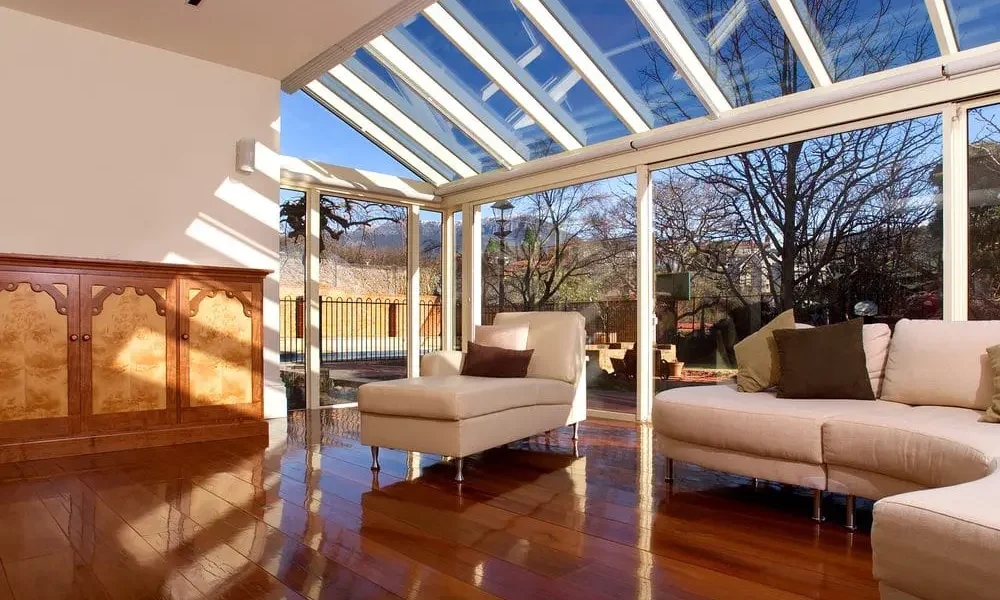Key Takeaways
- Understanding the pivotal role of natural light in health and energy savings.
- Identifying window styles and treatments that contribute to enhanced natural light.
- Exploring innovative technology in windows for improved light regulation.
- Architectural and interior design strategies for maximizing daylight.
- Considering the psychological and aesthetic impact of lighting transformations.
Understanding Natural Light and Its Importance
Embracing the full spectrum of natural light within your domestic setting uplifts your home’s ambiance and wellness quotient. Clinically, exposure to daylight has been linked to increased vitamin D levels and stabilizing one’s circadian rhythm, promoting better sleep and general health. From an ecological and economic standpoint, using natural light reduces reliance on artificial lighting, conserves energy, and reduces your carbon footprint.
Window Styles That Enhance Light Entry
Windows plays a vital role in balancing the natural light that enters your home while keeping it insulated and aesthetically appealing. Like other window designs, Denver Vinyl Windows offers a diverse range of opportunities for harnessing light. Picture windows provide unobstructed views and abundant sunlight, while bay and bow windows offer a broader light spectrum and additional seating or display space. Casement windows that crank open can direct breezes inside, allowing ample daylight, and transom windows above doorways or other windows add an extra level of light and architectural interest. The layout of your home often determines the style of windows you may choose, but the versatility and durability of vinyl windows make them a strong candidate in many scenarios. They blend functionality with style, producing a seamless indoor/outdoor light flow.
The Science of Glazing: How Window Treatments Affect Light
Glazing treatment extends the functionality of windows beyond mere daylight entry. For example, tinted glazing can reduce glare and heat without blocking the daylight, promoting a comfortable and well-lit interior environment. Reflective coatings can prevent heat absorption in sunny climates, allowing light to pass through.In addition, decorative frosted or stained glass can create a play of light without compromising privacy. Yet, sometimes, the goal is a balance between light and seclusion, where treatments like blinds, shades, or shutters come into play. They come in varying opacities, allowing homeowners to adjust light intake per their daily needs. There are several glazing systems available for your home therefore you should explore all options to ensure you get the amount of light exposure you desire.
Innovations in Window Technology
Window technologies have recently witnessed a quantum leap, propelling them to the forefront of energy-efficient home design. Thermochromic windows, for instance, modulate their tint based on ambient temperatures, minimizing the need for HVAC systems—a handy feature for homes in climates that experience a wide range of temperatures throughout the year. Electrochromic or intelligent windows, which can be dimmed or cleared with a button, add convenience and control previously unattainable. Their ability to adapt to the inhabitants’ preferences makes them an exceptional addition to any modern home, promising comfort and utility.
Planning for Light: Architectural Considerations
Natural lighting is an essential aspect of architectural planning. Well-placed windows can maximize the sunlight and create dynamic spaces with changing moods as the day progresses. Features such as large windows, skylights, or French doors can transform even the most confined spaces into open, airy retreats. Yet, achieving an optimal balance between light and comfort necessitates protective measures like overhangs or pergolas that shield from the intense midday sun while permitting a gentle luminescence wash. Such architectural considerations ensure that natural light is not simply a visual enhancement but a strategic element in home design that accentuates elegance and eco-conscious living.
Installing Skylights and Clerestory Windows
Skylights and clerestory windows introduce a vertical dimension to daylight design. Positioned high on walls or the roof, clerestory windows capture light at angles that traditional windows might miss, thus illuminating upper levels and otherwise dark interiors. Skylights can turn a mundane roof into a source of celestial views, transforming spaces with the dance of daylight and the rhythm of the rain. The correct installation and appropriate materials are crucial for insulating properties and preventing energy loss. When incorporated wisely within a building’s design, these features enhance natural light while maintaining energy efficiency, a nod to the aesthetic and practical virtues of high-quality windows.
The Impact of Outdoor Spaces on Indoor Light Quality
The orchestration of outdoor landscapes profoundly affects indoor natural light levels. Tall trees might provide respite from the summer heat but could obstruct light if not positioned correctly. Gardens and exterior structures should be planned with beauty and light access in mind. An open patio area that reflects sunlight can enhance the brightness of adjacent indoor rooms, and strategic plant placement can filter light to prevent glare while still allowing a soft luminance to pass through. Such synergy between exterior and interior enhances the overall quality of light experienced within the home.
